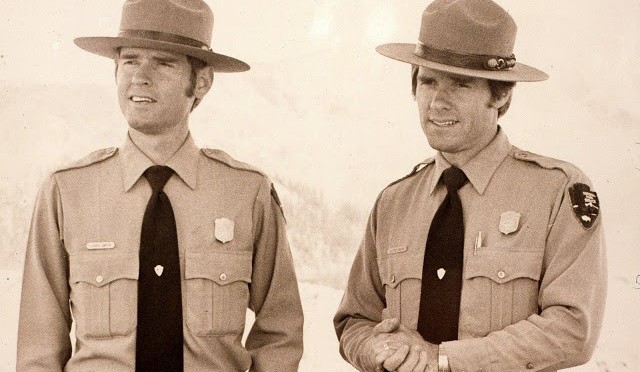Is he still at North Cascades?
Yes.
Last summer we planned to go and see him, but the summer shortened before we got up there. He was real proud of his buffalo chip. He had a varnished buffalo chip on a plaque in his office. That was his going away gift from Teddy Roosevelt. He prized it highly. He took our kids in there to show it to them and everything.
With Bob Benton, his ability to get things done, is real remarkable. I remember he made that statement “Crater Lake’s time has come.” And it had. He got through those historic preservation projects and I think you’re probably an outgrowth of his interest in history and so on. I’m so glad this position is even there (27).
Well, it isn’t at very many parks, western parks, that is.
Yeah.
There is still a lot of resistance to cultural resources in natural areas.
Well, back to your question about how I got interested in history. Well, part of it was I got good grades. I always got straight A’s in history, so that kept me going. Wanting to know what happened. The first thing in the park that I can remember was in ’64. The interpreters were upstairs, so I had a lot of interaction with them and so on. That was a real nerve center of the park. It was really nice having everybody in the same building. You weren’t in three or four different buildings, so you saw everybody everyday. The superintendent was always wandering through. The coffee room was upstairs. People were always together. The staff was relatively small, because everything was either at park headquarters or down at Medford. I was just flipping through some old things, and I saw an entry for the naming of Goodbye Creek. That’s what got me going on this chronological history. That is fascinating. It was goodbye to Mr. Arant (28). It was so exciting. I got a 3 x 5 card out and I typed up the thing and took it upstairs to the naturalist bulletin board and I put it up there. And I saw people gathered around it. Boy, wasn’t that interesting. So every time I’d find little things, tidbits, I’d type ‘em up and stick them up on the bulletin board. And that got me going on finding out why things were named. Then Larry Hakel decided one day that there should be a log kept of the park. I walked into his office and it was rolled up in his typewriter. He just started writing down things that were happening daily. That looked really interesting. I said, well, how about some of the things that happened this summer? So we added a few things there. And I thought, well, in 1916 this happened and in 1918 this thing happened. So I started scratching those things out and I said, why don’t we just make a log of a few things that people could reference.


